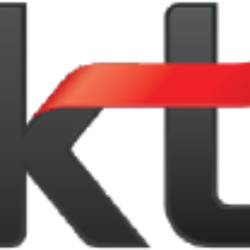PTXKY

PT XL Axiata Tbk
PTXKY
(2.2)3 USD
2.25% ROA
5.98% ROE
368.83x PER
30.342.568.355.022 USD
62.71% DER
0% Yield
4.66% NPM
PT XL Axiata Tbk Stock Analysis
PT XL Axiata Tbk Fundamental Analysis
Fundamental analysis in stock investing is like studying the foundation of a house before buying it. It involves looking at a company's financial health, like its earnings, assets, and debts, to determine if it's a good investment based on its fundamental strength and potential for growth.
| # | Analysis | Rating |
|---|---|---|
| 1 |
PBV
With a remarkably low PBV ratio (0.99x), the stock offers substantial upside potential at a bargain price. |
|
| 2 |
Revenue Growth
This company's revenue has experienced steady growth over the last five years, indicating a reliable and prosperous financial trajectory. |
|
| 3 |
ROE
The stock's ROE falls within an average range (4.68%), demonstrating satisfactory profitability and efficiency in utilizing shareholders' equity. |
|
| 4 |
ROA
The stock's ROA (1.63%) shows that it's doing a pretty good job at making money from its assets, making it a solid choice to invest and earn steady profits. |
|
| 5 |
Graham Number
The company's Graham number suggests that its stock price is underestimated, implying that it may present a compelling investment opportunity. |
|
| 6 |
Dividend
The company's history of regular dividend distributions in the last three years showcases its ability to generate reliable income for shareholders. |
|
| 7 |
Buffet Intrinsic Value
Based on Warren Buffett's formula, the company's stock appears undervalued (1.611.378), presenting an attractive investment chance with its intrinsic value surpassing the current market price. |
|
| 8 |
DER
The company has a high debt to equity ratio (165%), which means it owes a lot of money compared to what it actually owns, making it financially risky. |
|
| 9 |
Net Profit Growth
This company's net profit has remained flat over the past five years, suggesting a lack of growth and making it a less attractive investment opportunity. |
|
| 10 |
Assets Growth
Company's revenue has remained stagnant over the past three years, indicating a lack of growth and making it a less favorable option. |
|
| 11 |
Dividend Growth
The company's dividend growth has remained flat for the past three years, offering no indication of improved returns and making it a less advantageous investment opportunity. |
PT XL Axiata Tbk Technical Analysis
Technical analysis in stock investing is like reading the patterns on a weather map to predict future weather conditions. It involves studying past stock price movements and trading volumes to make predictions about where a stock's price might go next, without necessarily looking at the company's financial health.
| # | Analysis | Recommendation |
|---|---|---|
| 1 | Awesome Oscillator | Hold |
| 2 | MACD | Buy |
| 3 | RSI | Hold |
| 4 | Stoch RSI | Sell |
PT XL Axiata Tbk Price Chart
Financial Statements
Financial statements are like report cards for companies. They show how much money a company makes (income statement), what it owns and owes (balance sheet), and where it spends its money (cash flow statement), helping stock investors understand if a company is healthy and worth investing in.
Income Statements
An income statement for a company is like a scoreboard for its profits and losses. It shows how much money the company made (revenue) and how much it spent to make that money (expenses), helping stock investors see if a company is making a profit or not.
Revenue in stock investing is the total amount of money a company earns from its sales, and it's a key factor that investors consider to assess a company's financial performance and growth potential.
| Year | Revenue | Growth |
|---|---|---|
| 2004 | 2.590.703.653.000 | |
| 2005 | 3.059.127.187.000 | 15.31% |
| 2006 | 4.681.674.520.000 | 34.66% |
| 2007 | 7.989.518.796.000 | 41.4% |
| 2008 | 12.061.207.000.000 | 33.76% |
| 2009 | 13.706.051.000.000 | 12% |
| 2010 | 17.458.639.000.000 | 21.49% |
| 2011 | 18.712.778.000.000 | 6.7% |
| 2012 | 20.969.806.000.000 | 10.76% |
| 2013 | 21.265.060.000.000 | 1.39% |
| 2014 | 23.460.015.000.000 | 9.36% |
| 2015 | 22.876.182.000.000 | -2.55% |
| 2016 | 21.341.425.000.000 | -7.19% |
| 2017 | 22.875.662.000.000 | 6.71% |
| 2018 | 22.938.812.000.000 | 0.28% |
| 2019 | 25.132.628.000.000 | 8.73% |
| 2020 | 26.009.095.000.000 | 3.37% |
| 2021 | 26.754.050.000.000 | 2.78% |
| 2022 | 29.141.994.000.000 | 8.19% |
| 2023 | 32.413.108.000.000 | 10.09% |
| 2023 | 32.322.651.000.000 | -0.28% |
| 2024 | 34.453.248.000.000 | 6.18% |
Research and Development Expenses are the costs a company incurs to create and improve its products or services, which can be important for investors to evaluate a company's innovation and potential for future growth.
| Year | Research and Development Expenses | Growth |
|---|---|---|
| 2004 | 0 | |
| 2005 | 0 | 0% |
| 2006 | 0 | 0% |
| 2007 | 0 | 0% |
| 2008 | 0 | 0% |
| 2009 | 0 | 0% |
| 2010 | 0 | 0% |
| 2011 | 0 | 0% |
| 2012 | 0 | 0% |
| 2013 | 0 | 0% |
| 2014 | 0 | 0% |
| 2015 | 0 | 0% |
| 2016 | 0 | 0% |
| 2017 | 0 | 0% |
| 2018 | 0 | 0% |
| 2019 | 0 | 0% |
| 2020 | 0 | 0% |
| 2021 | 0 | 0% |
| 2022 | 0 | 0% |
| 2023 | 0 | 0% |
| 2023 | 0 | 0% |
| 2024 | 0 | 0% |
General and Administrative Expenses are the costs a company incurs to run its day-to-day operations, such as office rent, salaries, and utilities, which investors consider to understand a company's overall efficiency and management effectiveness.
| Year | General and Administrative Expenses | Growth |
|---|---|---|
| 2004 | 209.298.095.000 | |
| 2005 | 289.229.457.000 | 27.64% |
| 2006 | 491.444.656.000 | 41.15% |
| 2007 | 386.127.000.000 | -27.28% |
| 2008 | 547.741.000.000 | 29.51% |
| 2009 | 575.676.000.000 | 4.85% |
| 2010 | 551.178.000.000 | -4.44% |
| 2011 | 222.557.000.000 | -147.66% |
| 2012 | 244.166.000.000 | 8.85% |
| 2013 | 381.080.000.000 | 35.93% |
| 2014 | 440.118.000.000 | 13.41% |
| 2015 | 459.262.000.000 | 4.17% |
| 2016 | 324.824.000.000 | -41.39% |
| 2017 | 377.003.000.000 | 13.84% |
| 2018 | 330.998.000.000 | -13.9% |
| 2019 | 383.376.000.000 | 13.66% |
| 2020 | 220.324.000.000 | -74.01% |
| 2021 | 174.298.000.000 | -26.41% |
| 2022 | 236.655.000.000 | 26.35% |
| 2023 | 25.360.000.000 | -833.18% |
| 2023 | 245.411.000.000 | 89.67% |
| 2024 | 234.544.000.000 | -4.63% |
EBITDA stands for Earnings Before Interest, Taxes, Depreciation, and Amortization. It is a measure that helps stock investors analyze a company's profitability by looking at its earnings without considering certain expenses. This helps to get a clearer picture of the company's financial performance and its ability to generate cash flow.
| Year | EBITDA | Growth |
|---|---|---|
| 2004 | 1.335.669.669.000 | |
| 2005 | 1.251.014.440.000 | -6.77% |
| 2006 | 2.926.645.000.000 | 57.25% |
| 2007 | 2.917.830.000.000 | -0.3% |
| 2008 | 4.382.372.000.000 | 33.42% |
| 2009 | 7.339.000.000.000 | 40.29% |
| 2010 | 8.833.083.000.000 | 16.91% |
| 2011 | 9.302.322.000.000 | 5.04% |
| 2012 | 9.506.302.000.000 | 2.15% |
| 2013 | 8.053.143.000.000 | -18.04% |
| 2014 | 7.207.239.000.000 | -11.74% |
| 2015 | 8.022.666.000.000 | 10.16% |
| 2016 | 8.117.091.000.000 | 1.16% |
| 2017 | 8.111.711.000.000 | -0.07% |
| 2018 | 8.788.053.000.000 | 7.7% |
| 2019 | 10.196.157.000.000 | 13.81% |
| 2020 | 15.225.327.000.000 | 33.03% |
| 2021 | 14.012.782.000.000 | -8.65% |
| 2022 | 14.670.948.000.000 | 4.49% |
| 2023 | 16.002.548.000.000 | 8.32% |
| 2023 | 16.108.245.000.000 | 0.66% |
| 2024 | 18.013.748.000.000 | 10.58% |
Gross profit is the money a company makes from selling its products or services after subtracting the cost of producing or providing them, and it is an important measure for investors to understand a company's profitability.
| Year | Gross Profit | Growth |
|---|---|---|
| 2004 | 2.429.596.367.000 | |
| 2005 | 2.822.278.849.000 | 13.91% |
| 2006 | 4.377.202.990.000 | 35.52% |
| 2007 | 6.459.770.199.000 | 32.24% |
| 2008 | 9.764.826.000.000 | 33.85% |
| 2009 | 11.678.274.000.000 | 16.38% |
| 2010 | 12.033.895.000.000 | 2.96% |
| 2011 | 16.249.475.000.000 | 25.94% |
| 2012 | 12.666.080.000.000 | -28.29% |
| 2013 | 11.512.301.000.000 | -10.02% |
| 2014 | 11.874.535.000.000 | 3.05% |
| 2015 | 11.268.859.000.000 | -5.37% |
| 2016 | 11.145.761.000.000 | -1.1% |
| 2017 | 11.839.900.000.000 | 5.86% |
| 2018 | 12.064.616.000.000 | 1.86% |
| 2019 | 13.747.201.000.000 | 12.24% |
| 2020 | 16.474.715.000.000 | 16.56% |
| 2021 | 17.228.351.000.000 | 4.37% |
| 2022 | 18.531.570.000.000 | 7.03% |
| 2023 | 20.554.316.000.000 | 9.84% |
| 2023 | 20.154.785.000.000 | -1.98% |
| 2024 | 8.185.708.000.000 | -146.22% |
Net income in stock investing is like the money a company actually gets to keep as profit after paying all its bills, and it's an important measure to understand how well a company is doing financially.
| Year | Net Profit | Growth |
|---|---|---|
| 2004 | -45.302.622.000 | |
| 2005 | -224.092.093.000 | 79.78% |
| 2006 | 651.883.000.000 | 134.38% |
| 2007 | 250.781.000.000 | -159.94% |
| 2008 | -15.109.000.000 | 1759.81% |
| 2009 | 1.709.468.000.000 | 100.88% |
| 2010 | 2.891.261.000.000 | 40.87% |
| 2011 | 2.830.101.000.000 | -2.16% |
| 2012 | 2.764.647.000.000 | -2.37% |
| 2013 | 1.032.817.000.000 | -167.68% |
| 2014 | -891.063.000.000 | 215.91% |
| 2015 | -25.338.000.000 | -3416.71% |
| 2016 | 375.516.000.000 | 106.75% |
| 2017 | 375.244.000.000 | -0.07% |
| 2018 | -3.296.890.000.000 | 111.38% |
| 2019 | 712.579.000.000 | 562.67% |
| 2020 | 371.598.000.000 | -91.76% |
| 2021 | 1.287.807.000.000 | 71.14% |
| 2022 | 1.109.440.000.000 | -16.08% |
| 2023 | 1.439.684.000.000 | 22.94% |
| 2023 | 1.271.113.000.000 | -13.26% |
| 2024 | 1.943.400.000.000 | 34.59% |
EPS, or earnings per share, is a measure that shows how much profit a company has earned for each outstanding share of its stock, and it is important for stock investors as it helps understand the profitability of a company and compare it with other companies in the market.
| Year | Earning per Share (EPS) | Growth |
|---|---|---|
| 2004 | -158 | |
| 2005 | -733 | 78.58% |
| 2006 | 1.815 | 140.41% |
| 2007 | 690 | -162.9% |
| 2008 | -42 | 1742.86% |
| 2009 | 4.675 | 100.9% |
| 2010 | 6.707 | 30.3% |
| 2011 | 6.550 | -2.41% |
| 2012 | 6.392 | -2.47% |
| 2013 | 2.387 | -167.74% |
| 2014 | -2.075 | 215.04% |
| 2015 | -59 | -3477.59% |
| 2016 | 760 | 107.63% |
| 2017 | 700 | -8.57% |
| 2018 | -6.169 | 111.35% |
| 2019 | 67 | 9446.97% |
| 2020 | 35 | -94.12% |
| 2021 | 121 | 71.67% |
| 2022 | 103 | -16.5% |
| 2023 | 0 | 0% |
| 2023 | 97 | 100% |
| 2024 | 149 | 34.46% |
Cashflow Statements
Cashflow statements show the movement of money in and out of a company, helping stock investors understand how much money a company makes and spends. By examining cashflow statements, investors can assess if a company is generating enough cash to pay its bills, invest in growth, and provide returns to stockholders.
Free cash flow is the leftover cash that a company generates after covering its operating expenses and capital expenditures, which is important for stock investors as it shows how much money a company has available to invest in growth, pay dividends, or reduce debt.
| Year | Free Cashflow | Growth |
|---|---|---|
| 2004 | -1.705.194.597.000 | |
| 2005 | -3.062.523.050.000 | 44.32% |
| 2006 | -4.027.420.081.000 | 23.96% |
| 2007 | -6.868.396.218.000 | 41.36% |
| 2008 | -11.614.929.000.000 | 40.87% |
| 2009 | -5.282.741.000.000 | -119.87% |
| 2010 | -4.847.922.000.000 | -8.97% |
| 2011 | -6.521.544.000.000 | 25.66% |
| 2012 | -10.175.925.000.000 | 35.91% |
| 2013 | -226.783.000.000 | -4387.08% |
| 2014 | 1.445.445.000.000 | 115.69% |
| 2015 | 1.687.598.000.000 | 14.35% |
| 2016 | 391.256.000.000 | -331.33% |
| 2017 | 2.066.089.000.000 | 81.06% |
| 2018 | 3.084.033.000.000 | 33.01% |
| 2019 | 3.260.890.000.000 | 5.42% |
| 2020 | 6.183.259.000.000 | 47.26% |
| 2021 | 4.670.662.000.000 | -32.39% |
| 2022 | 5.273.424.000.000 | 11.43% |
| 2023 | 5.171.387.000.000 | -1.97% |
| 2023 | -2.865.592.000.000 | 280.46% |
| 2024 | 2.721.202.000.000 | 205.31% |
Operating cash flow represents the cash generated or consumed by a company's day-to-day operations, excluding external investing or financing activities, and is crucial for stock investors as it shows how much cash a company is generating from its core business operations.
| Year | Operating Cashflow | Growth |
|---|---|---|
| 2004 | 0 | |
| 2005 | 0 | 0% |
| 2006 | 0 | 0% |
| 2007 | 0 | 0% |
| 2008 | 0 | 0% |
| 2009 | 0 | 0% |
| 2010 | 0 | 0% |
| 2011 | 0 | 0% |
| 2012 | 0 | 0% |
| 2013 | 7.166.911.000.000 | 100% |
| 2014 | 8.540.116.000.000 | 16.08% |
| 2015 | 6.246.224.000.000 | -36.72% |
| 2016 | 5.975.699.000.000 | -4.53% |
| 2017 | 8.763.184.000.000 | 31.81% |
| 2018 | 9.357.786.000.000 | 6.35% |
| 2019 | 12.357.027.000.000 | 24.27% |
| 2020 | 13.949.485.000.000 | 11.42% |
| 2021 | 11.963.257.000.000 | -16.6% |
| 2022 | 14.104.495.000.000 | 15.18% |
| 2023 | 15.596.020.000.000 | 9.56% |
| 2023 | 0 | 0% |
| 2024 | 5.160.577.000.000 | 100% |
Capex, short for capital expenditures, refers to the money a company spends on acquiring or upgrading tangible assets like buildings, equipment, or technology, which is important for stock investors as it indicates how much a company is investing in its infrastructure to support future growth and profitability.
| Year | Capital Expenditure | Growth |
|---|---|---|
| 2004 | 1.705.194.597.000 | |
| 2005 | 3.062.523.050.000 | 44.32% |
| 2006 | 4.027.420.081.000 | 23.96% |
| 2007 | 6.868.396.218.000 | 41.36% |
| 2008 | 11.614.929.000.000 | 40.87% |
| 2009 | 5.282.741.000.000 | -119.87% |
| 2010 | 4.847.922.000.000 | -8.97% |
| 2011 | 6.521.544.000.000 | 25.66% |
| 2012 | 10.175.925.000.000 | 35.91% |
| 2013 | 7.393.694.000.000 | -37.63% |
| 2014 | 7.094.671.000.000 | -4.21% |
| 2015 | 4.558.626.000.000 | -55.63% |
| 2016 | 5.584.443.000.000 | 18.37% |
| 2017 | 6.697.095.000.000 | 16.61% |
| 2018 | 6.273.753.000.000 | -6.75% |
| 2019 | 9.096.137.000.000 | 31.03% |
| 2020 | 7.766.226.000.000 | -17.12% |
| 2021 | 7.292.595.000.000 | -6.49% |
| 2022 | 8.831.071.000.000 | 17.42% |
| 2023 | 10.424.633.000.000 | 15.29% |
| 2023 | 2.865.592.000.000 | -263.79% |
| 2024 | 2.439.375.000.000 | -17.47% |
Balance Sheet
Balance sheets provide a snapshot of a company's financial health and its assets (such as cash, inventory, and property) and liabilities (like debts and obligations) at a specific point in time. For stock investors, balance sheets help assess the company's overall worth and evaluate its ability to meet financial obligations and support future growth.
Equity refers to the ownership interest or stake that shareholders have in a company, representing their claim on its assets and earnings after all debts and liabilities are paid.
| Year | Equity | Growth |
|---|---|---|
| 2004 | 1.030.698.779.000 | |
| 2005 | 3.629.311.030.000 | 71.6% |
| 2006 | 4.281.194.483.000 | 15.23% |
| 2007 | 4.464.806.068.000 | 4.11% |
| 2008 | 4.307.897.000.000 | -3.64% |
| 2009 | 8.803.113.000.000 | 51.06% |
| 2010 | 11.715.074.000.000 | 24.86% |
| 2011 | 13.692.512.000.000 | 14.44% |
| 2012 | 15.370.036.000.000 | 10.91% |
| 2013 | 15.300.147.000.000 | -0.46% |
| 2014 | 13.960.625.000.000 | -9.6% |
| 2015 | 14.091.635.000.000 | 0.93% |
| 2016 | 21.209.145.000.000 | 33.56% |
| 2017 | 21.630.850.000.000 | 1.95% |
| 2018 | 18.343.098.000.000 | -17.92% |
| 2019 | 19.121.966.000.000 | 4.07% |
| 2020 | 19.137.366.000.000 | 0.08% |
| 2021 | 20.088.745.000.000 | 4.74% |
| 2022 | 25.774.226.000.000 | 22.06% |
| 2023 | 26.504.776.000.000 | 2.76% |
| 2023 | 26.249.297.000.000 | -0.97% |
| 2024 | 26.904.645.000.000 | 2.44% |
Assets represent the valuable resources that a company owns, such as cash, inventory, property, and equipment, and understanding a company's assets helps investors assess its value and potential for generating future profits.
| Year | Assets | Growth |
|---|---|---|
| 2004 | 6.474.459.432.000 | |
| 2005 | 9.353.949.839.000 | 30.78% |
| 2006 | 12.636.575.760.000 | 25.98% |
| 2007 | 18.827.267.195.000 | 32.88% |
| 2008 | 28.911.713.000.000 | 34.88% |
| 2009 | 27.380.095.000.000 | -5.59% |
| 2010 | 27.251.281.000.000 | -0.47% |
| 2011 | 31.170.654.000.000 | 12.57% |
| 2012 | 35.455.705.000.000 | 12.09% |
| 2013 | 40.277.626.000.000 | 11.97% |
| 2014 | 63.706.488.000.000 | 36.78% |
| 2015 | 58.844.320.000.000 | -8.26% |
| 2016 | 54.896.286.000.000 | -7.19% |
| 2017 | 56.321.441.000.000 | 2.53% |
| 2018 | 57.613.954.000.000 | 2.24% |
| 2019 | 62.725.242.000.000 | 8.15% |
| 2020 | 67.744.797.000.000 | 7.41% |
| 2021 | 72.753.282.000.000 | 6.88% |
| 2022 | 87.277.780.000.000 | 16.64% |
| 2023 | 87.688.084.000.000 | 0.47% |
| 2023 | 86.096.637.000.000 | -1.85% |
| 2024 | 86.589.472.000.000 | 0.57% |
Liabilities refer to the financial obligations or debts that a company owes to creditors or external parties, and understanding a company's liabilities is important for investors as it helps assess the company's financial risk and ability to meet its obligations.
| Year | Liabilities | Growth |
|---|---|---|
| 2004 | 5.443.760.653.000 | |
| 2005 | 5.724.638.809.000 | 4.91% |
| 2006 | 8.355.381.277.000 | 31.49% |
| 2007 | 14.362.461.127.000 | 41.82% |
| 2008 | 24.603.816.000.000 | 41.63% |
| 2009 | 18.576.982.000.000 | -32.44% |
| 2010 | 15.536.207.000.000 | -19.57% |
| 2011 | 17.478.142.000.000 | 11.11% |
| 2012 | 20.085.669.000.000 | 12.98% |
| 2013 | 24.977.479.000.000 | 19.58% |
| 2014 | 49.745.863.000.000 | 49.79% |
| 2015 | 44.752.685.000.000 | -11.16% |
| 2016 | 33.687.141.000.000 | -32.85% |
| 2017 | 34.690.591.000.000 | 2.89% |
| 2018 | 39.270.856.000.000 | 11.66% |
| 2019 | 43.603.276.000.000 | 9.94% |
| 2020 | 48.607.431.000.000 | 10.3% |
| 2021 | 52.664.537.000.000 | 7.7% |
| 2022 | 61.503.554.000.000 | 14.37% |
| 2023 | 61.183.308.000.000 | -0.52% |
| 2023 | 59.847.340.000.000 | -2.23% |
| 2024 | 59.684.827.000.000 | -0.27% |
PT XL Axiata Tbk Financial Ratio (TTM)
Valuation Metrics
- Revenue per Share
- 2571.13
- Net Income per Share
- 125.87
- Price to Earning Ratio
- 368.83x
- Price To Sales Ratio
- 0.9x
- POCF Ratio
- 35.45
- PFCF Ratio
- 4.36
- Price to Book Ratio
- 22.68
- EV to Sales
- 2.21
- EV Over EBITDA
- 4.36
- EV to Operating CashFlow
- 4.35
- EV to FreeCashFlow
- 10.68
- Earnings Yield
- 0
- FreeCashFlow Yield
- 0.23
- Market Cap
- 30.343 Bil.
- Enterprise Value
- 74.395 Bil.
- Graham Number
- 2407.78
- Graham NetNet
- -4347.32
Income Statement Metrics
- Net Income per Share
- 125.87
- Income Quality
- 10.4
- ROE
- 0.06
- Return On Assets
- 0.02
- Return On Capital Employed
- 0.06
- Net Income per EBT
- 0.71
- EBT Per Ebit
- 0.57
- Ebit per Revenue
- 0.12
- Effective Tax Rate
- 0.27
Margins
- Sales, General, & Administrative to Revenue
- 0.01
- Research & Developement to Revenue
- 0
- Stock Based Compensation to Revenue
- 0
- Gross Profit Margin
- 0.44
- Operating Profit Margin
- 0.12
- Pretax Profit Margin
- 0.07
- Net Profit Margin
- 0.05
Dividends
- Dividend Yield
- 0
- Dividend Yield %
- 0
- Payout Ratio
- 0.39
- Dividend Per Share
- 0
Operating Metrics
- Operating Cashflow per Share
- 1309.5
- Free CashFlow per Share
- 532.69
- Capex to Operating CashFlow
- 0.59
- Capex to Revenue
- 0.3
- Capex to Depreciation
- 0.84
- Return on Invested Capital
- 0.08
- Return on Tangible Assets
- 0.02
- Days Sales Outstanding
- 20.09
- Days Payables Outstanding
- 168.53
- Days of Inventory on Hand
- 2.8
- Receivables Turnover
- 18.17
- Payables Turnover
- 2.17
- Inventory Turnover
- 130.51
- Capex per Share
- 776.82
Balance Sheet
- Cash per Share
- 106,79
- Book Value per Share
- 2.058,20
- Tangible Book Value per Share
- 1027.11
- Shareholders Equity per Share
- 2047.06
- Interest Debt per Share
- 1515.47
- Debt to Equity
- 0.63
- Debt to Assets
- 0.19
- Net Debt to EBITDA
- 2.58
- Current Ratio
- 0.31
- Tangible Asset Value
- 13.426 Bil.
- Net Current Asset Value
- -53.367 Bil.
- Invested Capital
- 63224376000000
- Working Capital
- -14.290 Bil.
- Intangibles to Total Assets
- 0.16
- Average Receivables
- 1.804 Bil.
- Average Payables
- 8.934 Bil.
- Average Inventory
- 159529500000
- Debt to Market Cap
- 0.55
Dividends
Dividends in stock investing are like rewards that companies give to their shareholders. They are a portion of the company's profits distributed to investors, typically in the form of cash payments, as a way for them to share in the company's success.
| Year | Dividends | Growth |
|---|---|---|
| 2013 | 0 | |
| 2014 | 0 | 0% |
| 2016 | 0 | 0% |
| 2020 | 0 | 0% |
| 2021 | 0 | 0% |
| 2022 | 0 | 0% |
| 2023 | 0 | 0% |
| 2024 | 0 | 0% |
PT XL Axiata Tbk Profile
About PT XL Axiata Tbk
PT XL Axiata Tbk provides telecommunication, telecommunications network, and multimedia services for consumers and businesses in Indonesia. The company offers cellular mobile and closed fixed network, Internet service provider, voice over Internet protocol, content provider, money remitter service, e-money issuance services, and Internet interconnection services. It also provides leased line, VPN MPLS, corporate Internet, and voice over Internet protocol services; mobile data and home broadband services; data center and cloud services; mobile communication services; and mobile advertising and big data services, such as messaging services, display services, and digital rewards, as well as Internet of Things based solutions. The company was formerly known as PT Excelcomindo Pratama Tbk. and changed its name to PT XL Axiata Tbk in 2009. The company was founded in 1989 and is headquartered in Jakarta Selatan, Indonesia. PT XL Axiata Tbk is a subsidiary of Axiata Investments (Indonesia) Sdn. Bhd.
- CEO
- Ms. Dian Siswarini
- Employee
- 2.163
- Address
-
XL Axiata Tower
Jakarta Selatan, 12950
PT XL Axiata Tbk Executives & BODs
| # | Name | Age |
|---|---|---|
| 1 |
Mr. Mohammed A. Ali Chief Revenue Management Officer |
70 |
| 2 |
Ms. Dian Siswarini President Director & Chief Executive Officer |
70 |
| 3 |
Dewie Pelitawati Senior General Manager of Legal, Governance & Compliance |
70 |
| 4 |
Mr. Marwan Oemar Baasir Chief of Corporate Affairs |
70 |
| 5 |
Linda Susanty General Manager of Financial Accounting & Treasury |
70 |
| 6 |
Mr. Rudy Afandi Chief Human Capital Officer |
70 |
| 7 |
Mr. Feiruz Ikhwan Bin Abdul Malek Chief Financial Officer & Director |
70 |
| 8 |
Mr. I. Gede Darmayusa Chief Technology Officer & Director |
70 |
| 9 |
Mr. Indar Singh Dhaliwal Head of Investor Relations |
70 |
| 10 |
Mr. Octavia Kurniawan Chief Sales Officer |
70 |











